You might have noticed that in the past couple of years, ad platforms have been changing more than ever. For example, Facebook is now going through the Andromeda update. This is going to completely change how you run ads in 2026 and beyond.
You might have already noticed some of the effects of Andromeda, where interests you previously used are vanishing. This trend is going to continue till manual targeting is no longer an option.
So, how is Facebook going to find your audience if you can’t tell who you want to reach?
By inspecting your creative. Facebook’s LLMs have gotten so good that they can just look at your images, copy, and videos, and figure out who you are trying to win over.
And it’s not just Facebook, other platforms like YouTube, LinkedIn, Instagram, and TikTok have become really good at finding your target audience.
What does this mean for you?
Knowing how to use ad platforms isn’t that important anymore. Everything now boils down to the creative.
However, your ads won’t automatically succeed just because these platforms put your ads in your target audience’s feed. Your ads still need to be good.
The top media buyers do this by working with a team of designers and copywriters to create dozens of ads. Instead of creating one ad and praying that it works, they create multiple versions of each ad, test them with a small budget, and then pick the winner.
This can take up several days and even weeks. However, thanks to AI, you can create unlimited ads in a few hours. By the time your competitors launch their 4th ad variation, you would have already tested 30 and found your winners…
Why should you use AI to create your ads?
Your ads are dying faster than you can replace them. 3 years ago, when you found your winning ad, you could sit back and relax and run it profitably for over a month without changing it.
After that, ad fatigue would set in as your audience gets bored seeing the same ad over and over again. So, the ad stops converting, and you’d have to go back to Photoshop to create new ads again.
But nowadays, ad fatigue is setting in after just a week. It’s because many of your competitors are now using AI to create both organic content and ads that are pulling your prospects' eyes away from you.
So, what can you do?
There are only two ways to compete with them now…
Hire more people to create ads for you.
Or use AI and create ads faster than them.
Using AI, you can create both image and video ads in about the same time it takes you to just write the copy. This way, before the end of every week, you can come up with new creative ideas before ad fatigue sets in by spending far less time.
The result? You can scale your ad spend without scaling your team.
AI is especially useful in creating video ads. Before, you needed to wait days and even weeks to create one video ad. But now, thanks to AI, you can create 3 to 5 good video ads in an afternoon.
That’s the kind of testing volume that finds winners fast.
How are businesses using AI to create ads
AI levels the playing field between small businesses, creators, and enterprises. It gives you the opportunity to not just create more ads, but better ones.
You can now create ads that look like they were made in Hollywood and not in a studio apartment for 1% of what they used to cost.
Let me show you what’s working right now…
Million dollar ads
If you had an unlimited budget, what kind of ads would you create?
You’d probably go for the Super Bowl style commercials you see on TV, shot with the best equipment and acting that makes you laugh, cry, and dance.
However, very few businesses create these types of ads for platforms like Facebook and YouTube.
Why?
Creating an ad like that can cost over $40,000 and take weeks to create each video. So, many settle for mediocre ads.
But with AI, you can create Million Dollar ads (high-production ads) in a couple of days for a few hundred dollars, as you don’t need actors or equipment. With the right prompts and script, anyone can create outstanding ads.
Don’t believe me? Here’s what that looks like…
The ad promotes a Ramen Bar and Sneaker Brand collaboration. It was completely made with AI without a camera, actor, or location shoots.
For more ideas and inspiration, you might want to check out our Million Dollar Ads Playlist.
Video Testimonial ads
Your Super Bowl level ad might get people to leave Facebook or TikTok and visit your website. But most will close your tab and go back to browsing their social feed before getting to the checkout page. It’s because of this thing called skepticism.
They are usually wondering. This looks good. You think your product looks amazing.
But why should I trust what you say?
This is where video testimonial ads come in. In these ads, you show people using and talking about your products. If it’s a scarf, for example, you show a person wearing the scarf and talking about how it keeps them warm and comfortable.
Like in this ad from Gymshark, where an influencer talks about the workout clothes she purchased. It makes it look like a recommendation instead of a sales message.
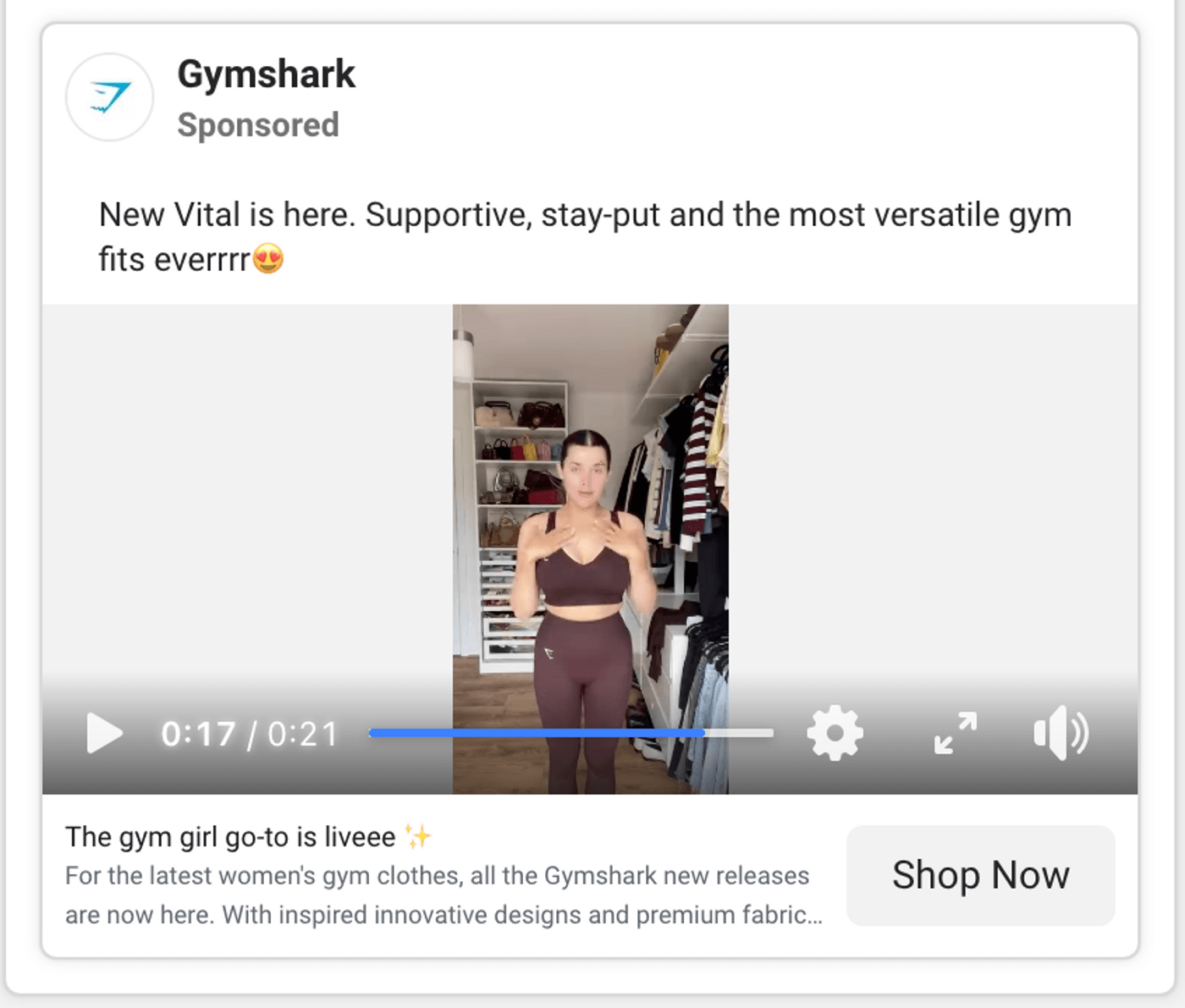
These are pretty easy to make, as many AI video tools now have UGC actors cloned from real people. You just tell the AI what product you are promoting and give it a script, and the actor will recite it naturally like a real human being.
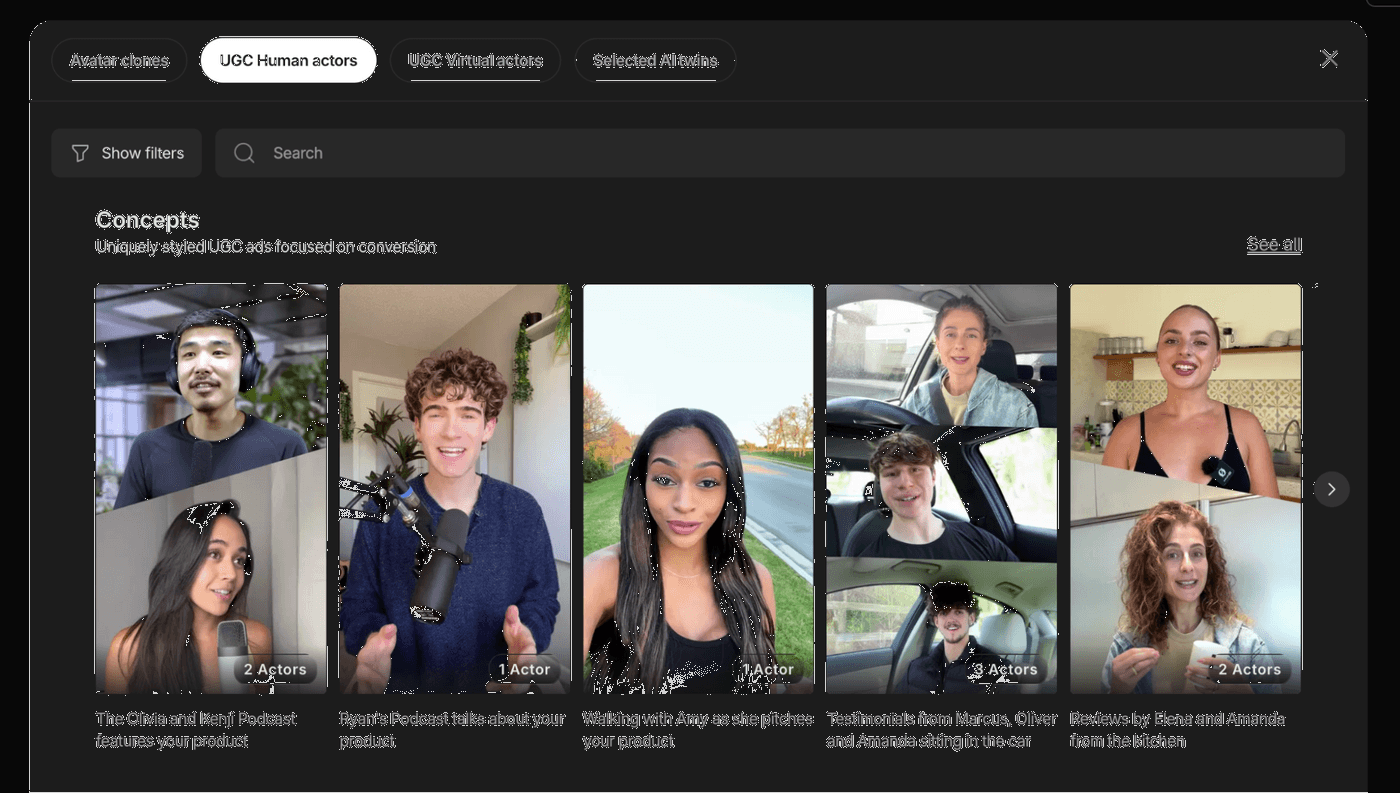
One of the best parts about this is that you can create actors who look like your target audience.
Selling a product for men in their 40s? You can create an ad with a male UGC actor in his 40s.
This can increase your conversion rates significantly as people respond better to videos from people who look like them.
Selfie talking ads
Just like testimonial ads where a customer talks about your product in front of a camera, you can also create selfie talking ads where someone at the company talks in front of the camera.
In a world full of similar products, your personal brand influences how well a product performs.
The person here could be a founder, CEO, or another employee. They can become an influencer who promotes their own product.
This playbook isn’t new. Gary Vee has been using it for more than a decade.
Right now, everyone sees him as a marketing expert, but before starting an agency, he ran a YouTube channel called Wine Library TV. He used it to become the brand for his family’s wine business and grow it from $3 million to $60 million a year.
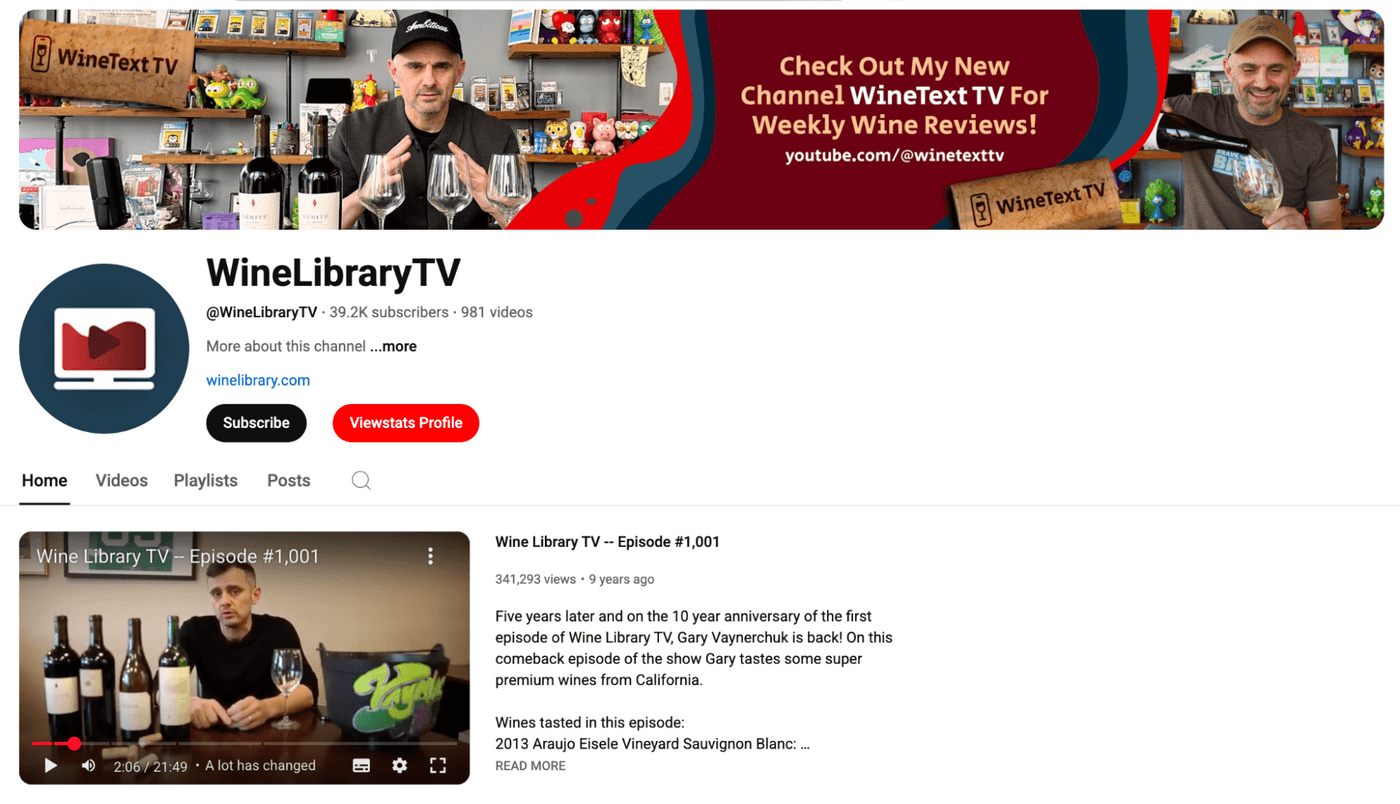
When most businesses create these types of videos, they usually hire an actor to record the videos instead of getting the founder or CEO to do it.
The problem? Many founders are camera-shy or don’t have the time for 50 takes to create one video.
But AI solves this problem, as you can create a digital AI twin of yourself, and then you or anyone in your team can create videos without recording. You just need to feed it a script.

Language localization ads
English speakers make up only 19% of the global population. By creating ads in other languages like French, Spanish, Hindi, and Mandarin, you can reach 60%+ of the population.
Almost no one does this, as hiring actors or translators and working on the ads is a big time drain.
However, with AI, you can automate this. You just upload your video and tell it the language you want to convert it to, and it will create a new version of the ad in that language.
It will also adjust the lip sync so it looks like it was originally recorded in that language.
The best part about this is that you can test your ads in a foreign market without spending thousands of dollars on translation services and actors.
7 Tips for Creating AI video ads
We have already covered how to create AI video ads from scratch. Now let’s look at what separates good AI ads from outstanding ones.
These are the techniques creative directors use to beat their competitors even when using the same tools.
Prompt the right way
You’re probably tiring of hearing this, but prompting matters. Those who know how to prompt will use AI to create the best content. Fortunately, this is pretty straightforward when using invideo.
You simply need to include these details…

Type of video: This is the video type you are creating. Is it a promo video, ad, explainer video, or another kind of video?
Duration: How many seconds or minutes long should the video be?
Website URL: Invideo uses this to learn more about your company.
Features and topics: List some of the features and topics you want to include in the video.
Call to action: This could be your phone number, link to your contact form or opt-in form, or any other way to get in touch with you.
On top of this, you can add more information that describes the video in more detail. The more information you provide, the more unique your video will be.
Put 80% of effort into the hook
Do you want to know a sad reality about marketing?
If your video’s hook is excellent (the first 3 to 15 seconds), then more people will watch the rest, even if it is mediocre.
However, if you flip it. Mediocre hook leads to amazing content, then far fewer people will watch past the first 3 seconds and see the rest.
Why does this happen?
It’s because your cold ads are competing with posts from their family and friends, and also with strangers posting cute cat videos.
So, put 80% of your effort into the hook. Go to places like the Google Ad Transparency Center and the Facebook ad library, find the top 10 to 20 ads from your competitors, and study them.
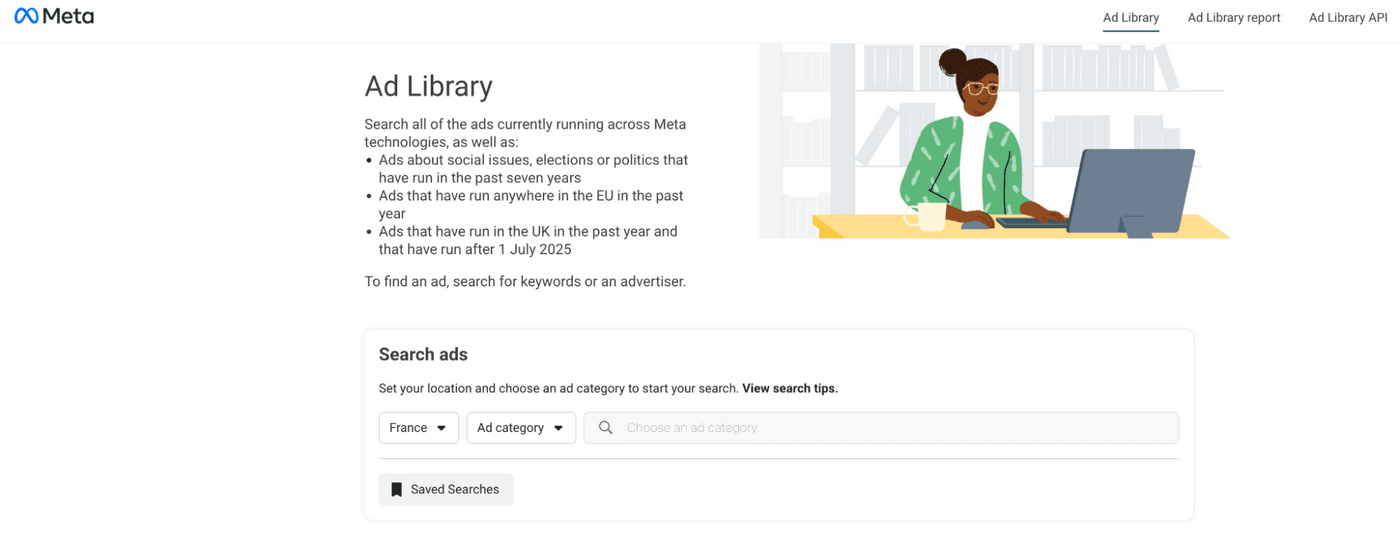
Figure out which ones have the best hooks and what makes you want to watch those videos.
Then brainstorm ways to create hooks that will beat theirs. Invideo makes this easy for you, as you can choose the type of hook you want when creating your videos.

You can choose between Fast Hook + 3 Steps, Problem to Proof, and Teach-Then-Task. This not only takes care of the hook, but also the rest of the video.
Modify for each platform
Just because an ad does well on Facebook, it doesn’t mean that it will do well on other networks like TikTok and YouTube. It’s because people use these networks differently.
For example, Facebook is more of an interest-based platform where people find your ad while they are browsing through their feed.
While on YouTube, it is more of an intent-based platform where people find your ads because they searched for something.

If you create the same ad for interest and intent-based audiences, then your ad will fail.
Monitor video metrics
The best thing about running video ads is that you can monitor a lot more KPIs than you do with organic videos. For example, when I run video ads on Facebook, I can see metrics like these…

They include 3-second views, thruplays (15-second views), 25% views, and so many other metrics. This allows me to see if my videos are performing well or are failing, and I can make the necessary adjustments.
For example, if I am getting more 3-second views and far fewer 15-second views, it means that people are dropping off somewhere in between those two parts of the video.
Facebook also gives you the option to create custom metrics.

One of the custom metrics I set up is 3-second views divided by impressions. I call this the hook rate, as it helps me check how well my hook is doing. I like to aim for a 40% hook rate.
Create custom audiences with video views
The best way to get the most out of the above ad formats is to combine them. For example, you can take all the people who view your high product value ads, but didn’t convert yet, and retarget them with video testimonial ads.
You can do this by creating custom audiences. These can be people who only viewed 3 seconds, 15 seconds, or 25% or more of your videos.
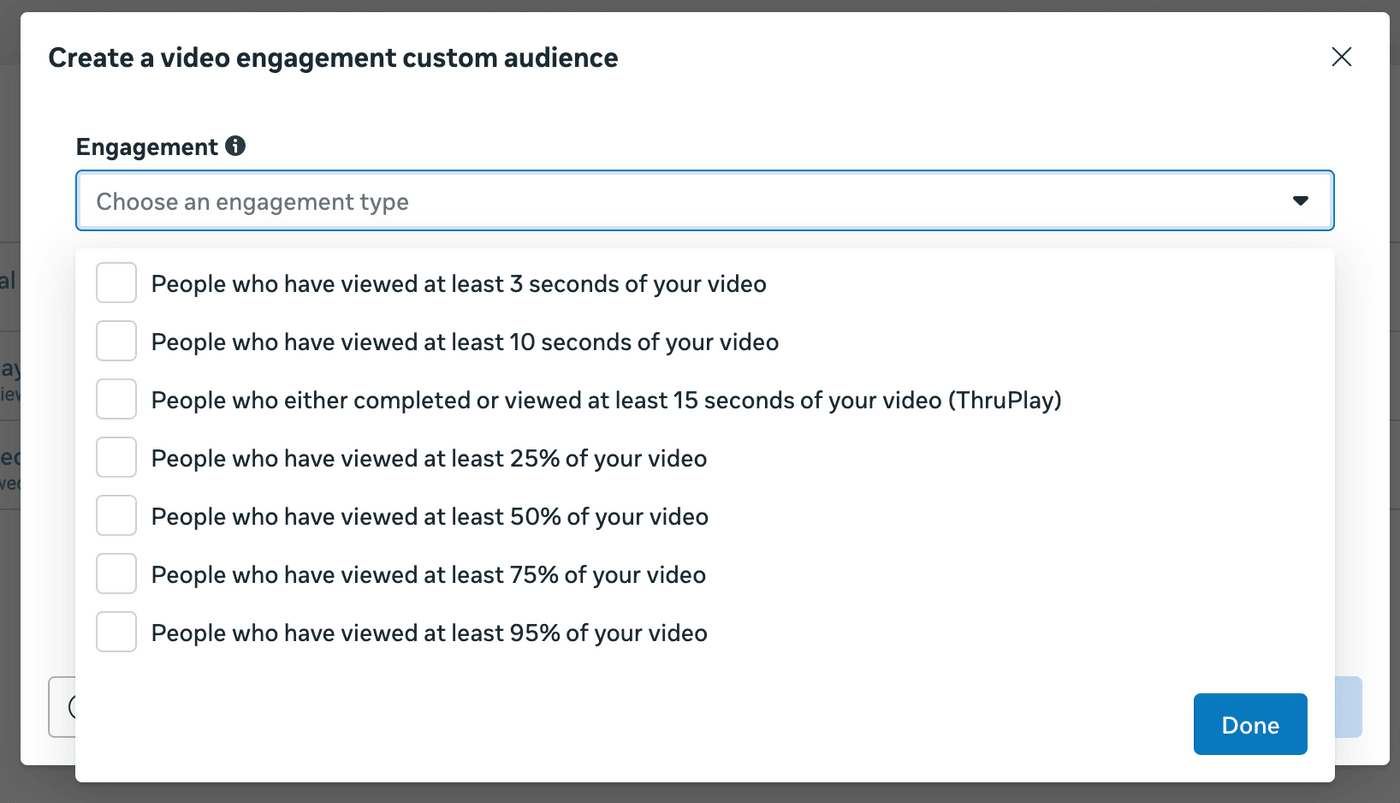
For the best results, target people who viewed 25% or more because they already spent a chunk of their time watching your videos. They will be more likely to convert than someone who just watched 3 seconds.
Always keep generating new creatives
One of the sad realities of running ads is that they will eventually tank. This is because ad fatigue sets in. People keep seeing your ads again and again, so they stop wanting to interact with them.
So, the businesses that constantly test new creatives and replace the poorly performing ones with the new ones will win.
Set aside 1 hour a week to create new ads and a $5 to $20 a day budget just to test new creatives.
Now scale your ads to the moon
Running a successful ad campaign is all about the creative now. If you have the best images, videos, and copy, you will beat the competition. And finding out what creatives will work best is a numbers game.
The businesses that create and test ads the quickest win. Doing it the manual way still works, but if you don’t like waiting weeks to create them, AI is the perfect alternative.
It allows you to create dozens of images and videos in the same time it takes to manually create 5 images.


